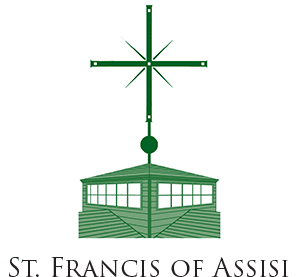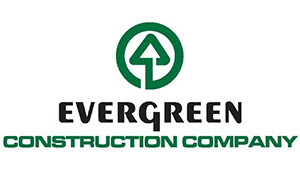As has been previously reported here, on October 1st North Carolina cities with populations greater than 90,000 were required to report on their affordable housing related activities as part of a mandate from Senate Bill 316 (Session Law 2019-144). The bill, which passed and was signed into law in July, requires NC’s largest cities to report on the programs, subsidies, and other activities they engage in to address affordable housing concerns.
The cities required to provide reports this October were (listed from largest to smallest):
The law requires cities to calculate the number of affordable housing units within their jurisdiction. For the purposes of reporting, cities are to define affordable housing as units reserved for those with incomes up the 80% AMI (for low-income) and up to 120% AMI (moderate income) that are either subsidized with government funds or are under some sort of local government oversight, such as public housing authorities or LIHTC developments. Cities were asked to report on their utilization of federal and state funding sources and describe their activities in 12 categories.
The following are the categories and a summary of reported activities:
1. Rezoning
All of the reports recognized the connection between increased density and housing supply. Within the last 5 years, several have conducted, or are currently conducting, broad re-evaluations of zoning practices & ordinances to determine how best to address the increased need for density. Others have conducted localized rezoning efforts targeting specific neighborhoods or areas within their cities. For example, this year Winston-Salem has identified and rezoned 53.38 acres to allow the production of moderate or high-density housing. The rest rezone on a case-by-case basis or have policies that allow increased density while not requiring or intentionally guiding development to be higher in density.
2. Facilitating/Support Expansion or Rehab of infrastructure
Half of the reporting cities were actively involved in the expansion or rehabilitation of existing infrastructure to accommodate increased housing development. Most of those also have on-going capital improvement programs that target improving, repairing, or installing infrastructure in targeted areas. Only Charlotte specifically provided any funding to projects for infrastructure improvements tied to moderate-income housing development. High Point was unique in explicitly offering facilitation assistance to specific projects in navigating required infrastructure or utility improvements. The ability or capacity of a city to assist or support infrastructure improvement is dependant on how utilities and systems are administered. Cities without control of certain infrastructure elements, such as utilities or roads, are unable to offer such assistance to specific developments, when those items are managed by entities outside of the city’s control.
3. Rehabilitate Uninhabitable Housing
Cities with rapid growth, such as Raleigh and Cary, reported that there was little need for municipal involvement in the rehab of such properties. High demand in these areas either results in housing being rehabilitated by private entities, although likely not targeted to low or moderate income households. Of regional note, the three Triad cities all identified a pronounced need to rehab such properties. Greensboro and High Point currently have programs to facilitate or incentivize rehab, with Winston-Salem currently developing strategies.
4. Fee Waivers
Eight of the ten cities do not offer any fee waivers, reductions, reimbursements, or other assistance to developments in this regard. Some equate other subsidies or assistance being provided as being equivalent to the cost for these fees. Of the eight, only one city, Winston-Salem, is currently re-evaluating whether or not to offer any fee assistance. Fee waivers or reduction do not appear to be a popular tool among North Carolina cities.
5. Accessory Dwelling Units (ADUs)
Most report that ADUs are allowed, in many cases by-right in certain locations or under certain parameters. However, reporting from most cities does not indicate the feasibility of creating an ADU in the current environment or how many units have been contributed to the housing stock by ADUs.
6. Mixed-Use
Every city is engaged in mixed-use development in some form or another.
7. TODs/Transit
Most of the cities have created policies to tie housing development to transportation planning in some way. The City of Durham’s Transportation Department, for example, works to locate transit stops within ¼ or ½ of affordable housing developments. In Greensboro, some designated Reinvestment Corridors have been placed along major transportation routes in order to accommodate higher density housing development.
8. Parking
Nine of the cities report allowing reduced parking requirements either by-right or under certain criteria that can be applied to a variety of housing types. Most indicated that parking reductions could be accessed by many building types and areas. Only one city reported a narrow use of reduced parking requirements reserved only for senior housing. However, they report that parking ordinances are being re-evaluated.
9. SROs
Most cities report that they are allowed, however, the extent that SROs actually contribute affordable housing units for low-mod income people is unclear. Most do not identify any income-requirements or incentives for affordable SROs.
10. Preservation
Most cities interpreted preservation to be the methods employed to assist people in staying in their homes by enabling them to make needed repairs or rehab for changing physical needs. Only Asheville interpreted preservation efforts to include land trusts. They report their support for the creation of a Community Land Trust.
11 & 12. Use of Federal, State & NCHFA Funding
All are using a mixture that is related to the specific needs of their cities. They all report that they actively seek out sources they can use or that projects in their jurisdictions may be able to access.
Gap Financing
While not a specific defined program or category, seven of the 10 cities reported that they support affordable housing development in their cities by providing “gap financing”, funds needed in order to make a specific project financially feasible. Simplistically this means filling the gap between what is the cost to build/operate compared to what the project income the development can support. The mandate did not specifically ask about this activity so it possible the other three are engaged in what would be considered gap financing. Cities are gathering funds from a variety of sources, some dedicated, some not. Some use their city’s own general funds, while others leverage or pool money from HUD or other sources to create the ability to provide such financial assistance.
A summary of reported activities can be seen here. Throughout the coming weeks, we will continue to refine our analysis and examine the reports and activities in more detail. We will be taking deeper dives on specific categories to further shed light on the range of tools and strategies being employed across North Carolina to address housing issues.








